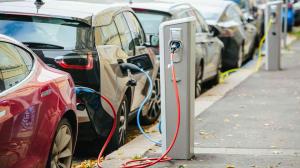Public Charging Stations for Electric Vehicles
Electric vehicles are becoming popular, and so are public charging stations. There are many benefits to using public chargers while you are out.
NEW YORK, USA, August 15, 2022 /EINPresswire.com/ -- There is no doubt that electric vehicles are crucial to achieving net-zero emissions by 2050 and boron is key to making them more efficient. By using boron to create lighter, stronger materials for electric vehicles, we can reduce their weight and improve their range and performance.Boron is also used in the production of lithium-ion batteries, which is the most common battery type used in electric vehicles. Boron improves the efficiency of such batteries, making them last longer and providing more power for electric vehicles. This is vital for meeting our climate goals, as electric vehicles are clean and renewable energy sources that don’t produce harmful emissions.
The successful adoption of electric vehicles needs is another piece in the jigsaw. To make EV adoption more successful, local authorities need to roll out a credible, and user-friendly charging infrastructure. Many businesses, organizations, and government agencies are now beginning to install public charging stations to accommodate the needs of electric vehicles.
There are multiple benefits to installing public charging stations. For businesses and organizations, it can be a way to attract and retain customers or employees who own electric vehicles. For government agencies, it can be a way to promote the use of environmentally-friendly transportation options.
There are many options for electric vehicle charging that can be tailored to specific use cases. Charging can occur at home, at work, on the road, or while shopping. Some vehicle models also facilitate battery swapping at designated locations. However, the different EV charging system types, including location and charging speeds, describe a wide range of business models and roll-out techniques.
Suggestions for an Effective Public Charging Infrastructure
As the deployment of electric vehicles accelerates, policymakers will play a critical role in ensuring that the necessary infrastructure is in place to support this transition. Facilitating the implementation of an adequate charging network will be essential to reducing range anxiety and ensuring that electric vehicles are a viable option for consumers.
Policymakers can encourage the development of a robust charging network by releasing mandates and regulations to suppliers and contractors, organizing public tenders, providing financing or loan guarantees, and improving public land available for charging sites.
Attributes of Charging Infrastructure
1. Range Anxiety
One of the primary reasons given by drivers for opposing the transition to electric vehicles is a lack of charging stations. Range anxiety, or the worry of not being capable of charging in time to reach one’s destination, is a severe obstacle to EV adoption. According to studies, improving the availability of public charging networks is essential to increasing EV adoption rates. According to one Chinese market analysis, investing in infrastructure investment is four times more effective than subsidizing electric vehicles.
Most electric vehicle charging takes place at home, but public electric vehicle supply equipment (EVSE) infrastructure is still important for several reasons. Multi-unit dwelling residents, for example, may not have access to private parking with a power source. Drivers of commercial vehicles and taxis, as well as those making longer trips, require charging during their journeys. Policy intervention is thus necessary to ensure that all drivers have access to the charging they need.
2. Accessibility
Publicly accessible charging infrastructure is, as the name suggests, open to use by the public. Anyone with an electric vehicle can charge their car at these stations.
Privately accessible charging infrastructure, on the other hand, is only available for use by certain people. These could be employees of a company, residents of an apartment complex, or members of a club or organization. Because they are not open to the general public, these types of EVSE may have different pricing structures than publicly accessible ones.
However, a third category – limited publicly available infrastructure – exists to accommodate charging stations that are not always accessible to the public. It usually refers to charging stations with public access but on private property with limited access and operating hours.
Moreover, the terms charging stations and charge points can be distinguished when addressing charging infrastructure for electric vehicles. A charging station may have multiple charging points. A charge point can have multiple charge outlets, but only one of them can be active at a time.
3. Location
The charging infrastructure is classified by location, with home charging, workplace charging, depot charging, road-side charging, destination charging, and en-route charging.
Battery swapping is another charging solution for electric vehicles. Rather than plugging into a charging station, batteries can be swapped out at designated swapping stations.
Determined by the size and weight of the battery, this process can be performed manually or mechanically. Battery swapping stations are becoming more popular in areas where electric vehicles are increasing, such as East Africa, Chinese Taipei, and India.
The Impact of Charging Location on Business Models
Source - https://borates.today/public-charging-electric-vehicles/
Brendan McMahon
BORATES TODAY
editor@borates.today
Legal Disclaimer:
EIN Presswire provides this news content "as is" without warranty of any kind. We do not accept any responsibility or liability for the accuracy, content, images, videos, licenses, completeness, legality, or reliability of the information contained in this article. If you have any complaints or copyright issues related to this article, kindly contact the author above.

